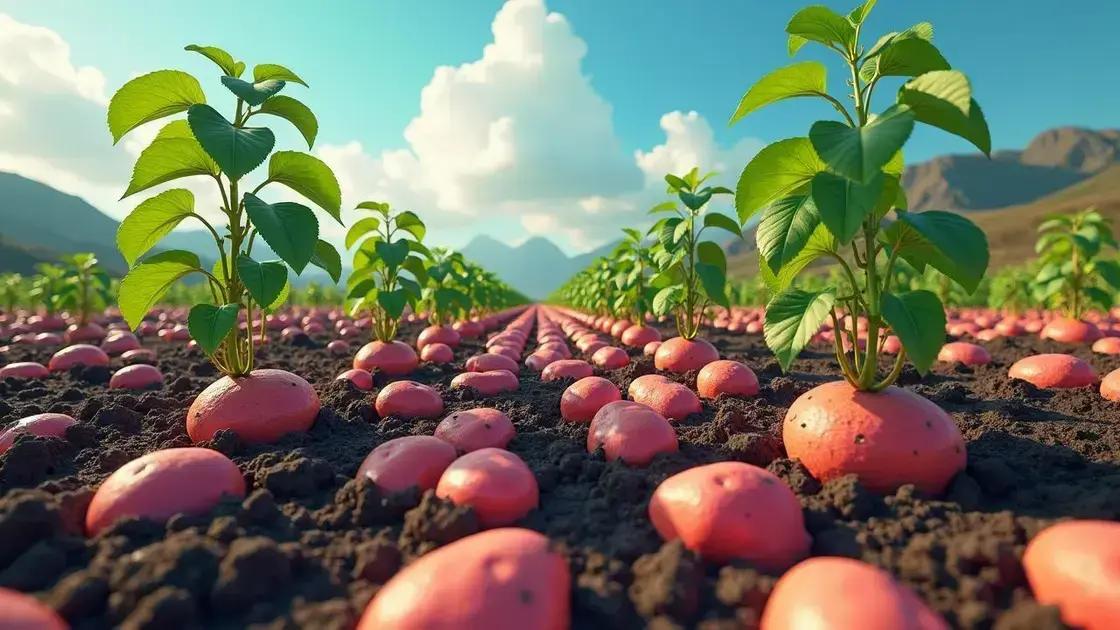How to Take Care of a Potato Plant: 5 Essential Tips for Beginners
How to take care of a potato plant is a question many garden enthusiasts ask. With their vibrant greens and nutrient-packed tubers, potatoes can be a rewarding crop to grow. Grasping the essentials of their care can lead to a bountiful harvest. Dive into the following sections to explore practical insights that will transform your potato gardening experience.
Table of Contents
ToggleEssential tips for growing healthy potato plants
How to take care of a potato plant involves several essential tips that can help you achieve a healthy harvest. By focusing on the right practices, you can nurture your potatoes from seed to table. Here are invaluable insights to enhance your potato gardening experience.
Understanding your potato plants’ needs
- Choose the right potato variety for your climate and soil conditions.
- Ensure you plant certified seed potatoes to avoid diseases.
- Space your plants appropriately for optimal growth.
Soil preparation and requirements
- Loamy soil enriched with organic matter is best.
- Maintain a pH between 5.5 and 6.5 for optimal nutrient uptake.
- Consider conducting a soil test to determine nutritional needs.
Watering the potato plants effectively
Proper watering is crucial for your potato plants’ health. Here’s how to manage it:
- Water deeply but infrequently to encourage deep root development.
- During flowering, ensure consistent moisture for tuber formation.
- Mulch around your plants to retain moisture and suppress weeds.
Pest and disease management
Preventing and managing pests is essential for growing healthy potatoes. Implement these strategies:
- Rotate crops each year to reduce pest populations.
- Keep your garden free of debris and weeds.
- Monitor your plants regularly for signs of pests and disease, and take action promptly.
Additionally, check out this resource for exploring indoor gardening techniques to learn more about creating an ideal environment for your potato plants.
Harvesting your potatoes
Knowing when and how to harvest is key to maximizing your crop yield:
- Harvest when the leaves turn yellow and begin to die back.
- Use a garden fork to gently lift the tubers, being careful not to damage them.
- Allow harvested potatoes to cure in a dark, cool place before storing.
In conclusion, following these essential tips for growing healthy potato plants will lead you to a bountiful and delicious harvest. Happy gardening!
Understanding potato plant soil requirements

Understanding potato plant soil requirements is crucial for successful potato cultivation. The right soil conditions directly impact your potatoes’ health and yield. Let’s delve into the essential factors for creating the perfect environment for your potato plants.
Key soil characteristics for potato growth
- Soil texture: A loose, well-draining loamy soil is ideal for potatoes.
- Soil pH: Aim for a slightly acidic pH level between 5.5 and 6.5.
- Organic matter: Incorporate compost or well-rotted manure to enhance soil fertility.
Soil drainage and water retention
Proper drainage is essential for the health of your potato plants:
- Ensure soil drains well to prevent waterlogging, which can lead to root rot.
- Consider raised beds or mounds to improve drainage, especially in heavier soils.
- Add organic materials to enhance water retention without inhibiting drainage.
Preparing the soil for planting
Before planting your potatoes, take the following steps:
- Test soil for nutrient levels and pH, adjusting as necessary with lime or sulfur.
- Clear the area of weeds and debris to minimize competition for nutrients.
- Loosen the soil to a depth of at least 12 inches to promote root growth.
For more insights on creating the perfect space for your plants, consider exploring indoor gardening techniques that can further enhance your gardening skills.
Examples of nutrient-rich amendments
| Amendment | Nutrient Benefits | Application Method |
|---|---|---|
| Compost | Improves soil structure and nutrient content | Incorporate 2-3 inches into planting beds |
| Bone meal | Provides phosphorus for root and tuber development | Mix into soil before planting |
| Wood ash | Raises soil pH and adds potassium | Sprinkle on soil surface and work in |
With these tips in mind, paying close attention to your potato plant soil requirements will yield healthier plants and a more rewarding harvest.
Effective watering and maintenance techniques for potatoes
Effective watering and maintenance techniques for potatoes are crucial to achieving a successful harvest. Proper care ensures your potato plants thrive, leading to delicious tubers at harvest time. Let’s explore the best practices for watering and maintaining your potato crops.
Understanding potato plant water needs
- Potato plants require consistent moisture, especially during tuber formation.
- Ideally, aim for 1-2 inches of water per week, depending on climate and soil type.
- Monitor soil moisture closely; potatoes are sensitive to drought stress.
Best watering practices for potatoes
Incorporate these strategies for optimal watering:
- Water deeply and infrequently to encourage root growth.
- Use drip irrigation or soaker hoses to deliver water directly to the roots.
- Adjust your watering schedule based on weather conditions, increasing frequency during dry spells.
Maintenance tasks to enhance potato growth
Maintain your potato plants with these essential actions:
- Regularly remove weeds that compete for nutrients and moisture.
- Hill soil around the base of the plants to support growth and protect developing tubers from sunlight.
- Fertilize appropriately; consider using a balanced fertilizer at planting and a side-dressing of nitrogen during growth.
For tips on providing the best environment for your plants, consider exploring indoor gardening techniques that can further support your gardening efforts.
Pest and disease prevention strategies
Keep your potato plants healthy by combating common issues:
- Rotate crops to disrupt pest life cycles.
- Inspect plants regularly for early signs of disease or pest infestation.
- Practice good sanitation by removing any diseased plant material promptly.
With these effective watering and maintenance techniques for potatoes, you’ll ensure a robust crop and enjoy a rewarding gardening experience.
In conclusion
Taking care of potato plants requires attention to soil requirements, effective watering, and proper maintenance techniques. By understanding the specific needs of your potato plants, you can ensure a healthy and productive garden. Remember, consistent care and monitoring for pests will further enhance your gardening success. For additional insights and tips on enhancing your indoor garden, be sure to explore expert resources.

